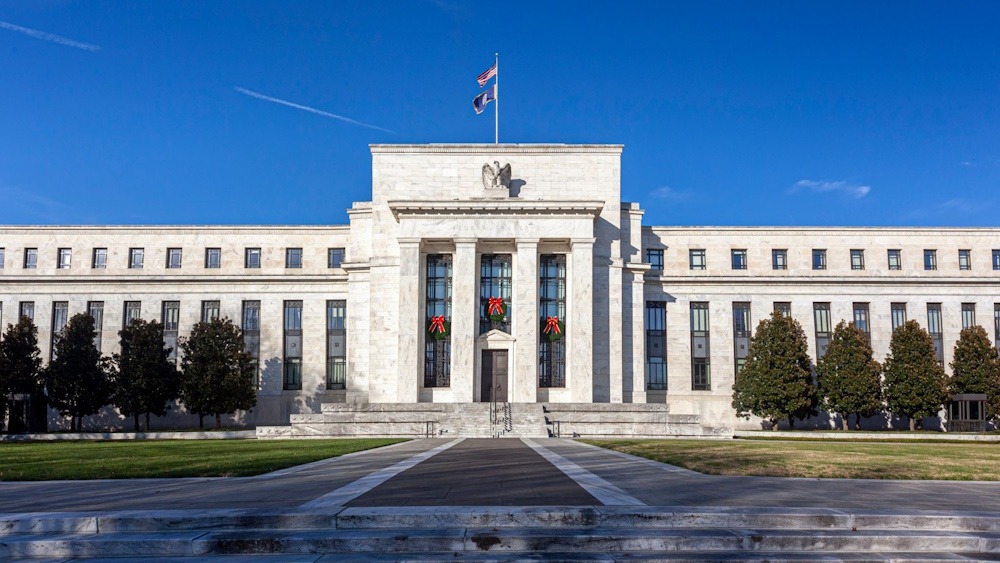
U.S. Federal Reserve Chair Jerome Powell is set to address the audience later in the session at the central bank’s Jackson Hole symposium, which stands as the week’s focal point as investors seek insights regarding the trajectory of interest rates for the remainder of the year. Expectations surrounding an interest rate cut in September experienced a notable increase at the beginning of the month following unexpectedly weak payroll data. However, these projections have diminished considerably over the past week, contributing to heightened volatility as he addresses the situation. Last week, market participants were assigning a 99 percent probability to a 25 basis points reduction in rates at the forthcoming Federal Reserve meeting. The current probability stands at 71.5 percent, as indicated by Investing.com’s Fed Rate Monitor Tool. The decline can be attributed primarily to producer inflation data that exceeded expectations, while also being influenced by hawkish remarks from Federal Reserve officials. Kansas City Fed President Jeffrey Schmid, a voting member, indicated that the central bank is not hastily moving to reduce interest rates, highlighting that inflation remains above its 2% target alongside a robust labor market. Cleveland Fed President Beth Hammack, a non-voting member, expressed concern on Thursday that persistent inflation could preclude an interest-rate cut in September. Powell’s speech occurs in the context of market apprehensions regarding stagflation, characterized by a blend of sluggish growth and persistent inflation, which may constrain the Federal Reserve’s capacity to relax monetary policy. The chair of the Federal Reserve may take this occasion to emphasize the significance of the central bank’s autonomy, especially in light of the considerable critique from the Trump administration, and notably from the president himself. Earlier this week, Trump called for the resignation of Fed Governor Lisa Cook in light of mortgage allegations brought forth by one of his political allies, thereby amplifying his attempts to exert influence over the U.S. central bank.
Dow futures experienced a decline on Friday, as market participants anticipated insights from Fed chair Jerome Powell’s address at the Jackson Hole symposium regarding the trajectory of monetary policy. At 03:00 ET (07:00 GMT), the S&P 500 futures exhibited a decline of 7 points, reflecting a decrease of 0.1%. Similarly, Nasdaq 100 futures experienced a drop of 60 points, translating to a 0.3% reduction, while Dow futures saw a decrease of 20 points, or 0.1%. The major indices experienced a downturn on Thursday, as the broad-based S&P 500 recorded its fifth consecutive day of declines. As of Thursday’s close, all three major averages were on track for a decline this week. The S&P 500 has declined by 1.2% week to date, while the NASDAQ Composite has experienced a decrease of 2.4%. Additionally, the Dow Jones Industrial Average is projected to see a reduction of 0.4%. Market participants are exhibiting a degree of caution in anticipation of Powell’s address at the Federal Reserve’s annual economic symposium in Wyoming, seeking insights into the trajectory of interest rates. On the corporate front, both Intuit and Zoom will be in the spotlight after the companies posted results after the close Thursday.
Nvidia has requested that certain component suppliers halt production of its made-for-China H20 general processing units, according to reports, as Beijing imposes challenges on the American chip giant. Reports say that Nvidia has requested Foxconn to suspend work on the H20 AI chip, which is the most advanced product the U.S. company is currently allowed to sell to China. Simultaneously, sources also add that Nvidia has requested Arizona-based Amkor Technology, responsible for the advanced packaging of the company’s H20 chips, and South Korea’s Samsung Electronics, which provides memory for these chips, to cease production. Nvidia was called to a meeting with the Cyberspace Administration of China last month, where it was requested to furnish information regarding its chips. This request comes in light of Beijing’s apprehensions that these chips may incorporate specific tracking technology, potentially enabling remote operation. Nvidia resumed sales of the H20 in July after a necessary halt in shipments in April, prompted by U.S. restrictions. Nvidia stated, “We constantly manage our supply chain to address market conditions,” but chose not to provide additional details.
4. Meta has entered into an agreement with Meta Platforms has signed a $10 billion deal with Alphabet’s Google, as reported by the Information. This agreement will enable the owner of Facebook to utilize Google Cloud’s servers, storage, and various services over the next six years. Meta, in conjunction with the AI Hyperscalers on Wall Street, is accelerating efforts to develop superintelligent AI. This urgency is driven by increasing demands from investors for returns on the substantial capital invested in AI development, which amounts to hundreds of billions of dollars. The company adjusted its annual capital expenditures forecast, increasing the lower bound by $2 billion, resulting in a revised range of $66 billion to $72 billion last month. Meta is actively pursuing external partnerships to finance the substantial infrastructure required for AI development by divesting $2 billion in data center assets, as revealed in a recent filing.
Oil prices experienced a modest increase on Friday, indicating a potential end to a two-week decline, as evidence mounts that peace talks between Russia and Ukraine are encountering significant obstacles. At 03:00 ET, Brent futures experienced an increase of 0.1%, reaching $67.68 per barrel, while U.S. West Texas Intermediate crude futures also rose by 0.1%, settling at $63.59 per barrel. Both contracts experienced an increase exceeding 1% in the previous session. Brent has experienced an increase of 3% this week, whereas WTI has seen a rise of approximately 1.4%. The ongoing conflict in Ukraine, now in its third and a half year, persisted without interruption on Thursday, leading market participants to factor in heightened risks regarding the potential disruption of Russian crude oil supplies to the global market. Oil prices experienced upward momentum due to a larger-than-anticipated reduction in U.S. crude inventories over the past week, suggesting robust demand dynamics.
